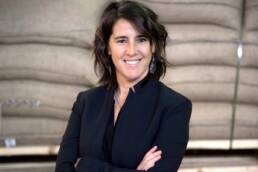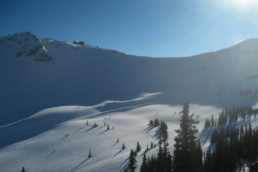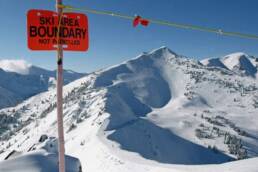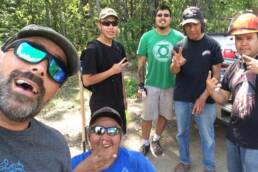Second only to oil as the world’s most-craved commodity, coffee brims with both a rich and a dark history. It’s a $100-billion-a-year industry rife with a past of empires, human toil and adored addiction. Lovers of mountain life, in particular, can seem to get enough. So why our enduring jones for java?
The front porch of The Goods General Store in Ymir, British Columbia, is a hub of activity before 10 a.m. Men cloaked in hoodies and jeans huddle at plywood tables. A continuous stream of cars parks out front, ejecting people in various stages of undress. Here comes a middle-aged woman in fuchsia tights and a ripped grey tank top. And here’s a man in pajama bottoms and a plaid shirt. They walk through the purple-painted pillars and through the well-worn door, emerging a few minutes later holding a cup. Pleasantries are exchanged with the posse sitting outside the store before they return to their vehicles. Whether staying or going, they’re all here for the same reason, to partake in the centuries-old ritual of sipping essence of the equator. Coffee.
This morning’s scene is identical to those in most mountain towns—except on one end of the porch is a skull-shaped chair resembling a throne and on the other is a working payphone. The Goods is one of hundreds of establishments in the Kootenays serving that murky brew from tropical climes most of us are smitten with. The stats back it up: 66 per cent of Canadians drink at least one cup of coffee a day. That’s 152 litres per person, per year.
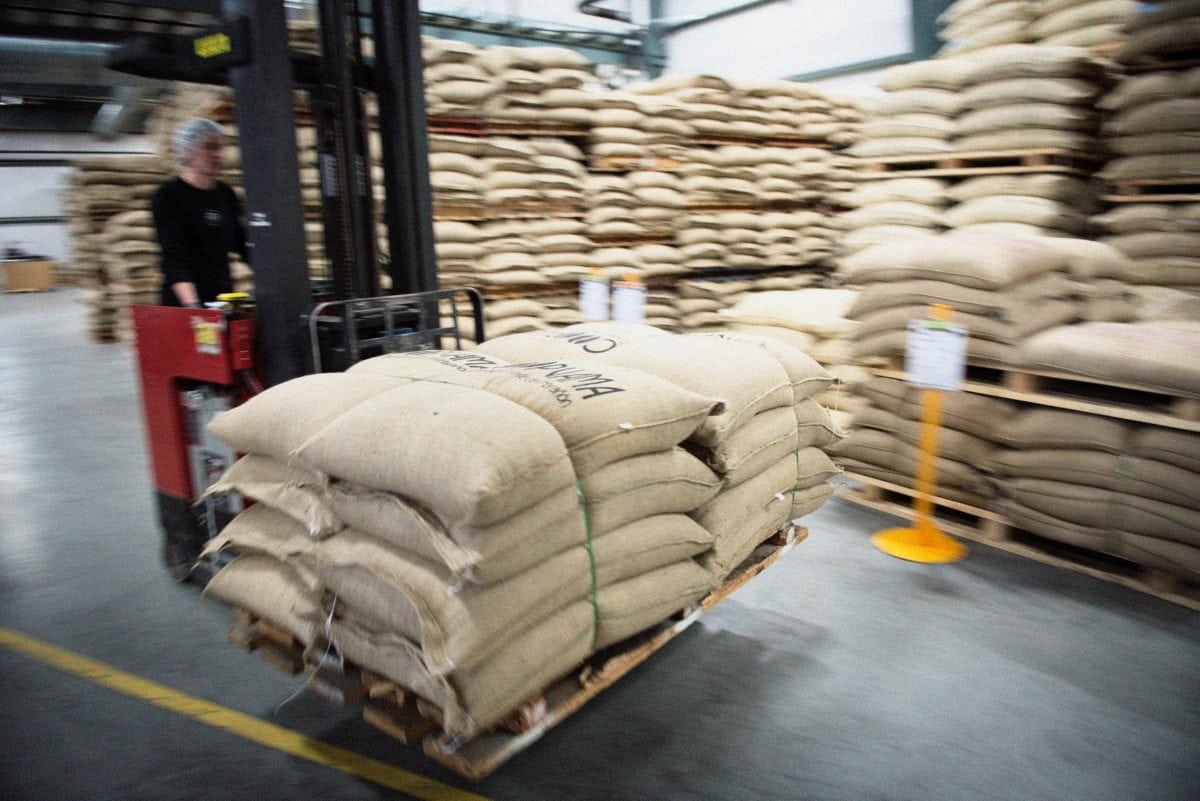
Thirty kilometres north of Ymir, in the community of Nelson, British Columbia, there are 21 establishments that specialize in serving coffee. Oso Negro is one of the original cafés in the bustling city and, according to owner Jon Meyer, sees between 800 and 1,000 visitors a day—almost one-tenth of the city’s population. There is also a growing number of micro-roasters in the region, like Rooftop in Fernie, and No6 Coffee Co. in Nelson, which begs a few questions: why is a seed from the southern hemisphere so popular, and how is it changing the landscape of northern mountain towns?
“Mountain lifestyle is tied to coffee culture,” says Rick Evans, co-owner of Evans Brothers Coffee. He’s speaking from Coeur D’Alene, Idaho, where he and his younger brother Randy are opening their second location. “Coffee brings us together to connect and enjoy where and how we live.” Having resided in larger centres in California and Texas, Evans believes coffee has a different purpose for city slickers than it does for mountain dwellers. It fuels the stoke to get ahead versus an excuse to stop, catch up with friends and savour good flavours.
“Coffee is sunshine and warmth and rainforest, all in a cup,” says Meyer, seated in Oso Negro’s paradisiacal outdoor garden. He believes there’s happiness derived from consuming something that comes from warmer latitudes, especially in colder climes. Denis Leblanc of No6 Coffee Co. goes one step further to say there’s a deeper connection between the crop and high-elevation dwellers. “It’s grown in the mountains so maybe there’s an energetic link,” he says. “We can relate to it. It helps us do what we love here, whether it’s extreme sports or just chatting with our neighbours.”
Whatever the reason, there’s no question coffee and mountain towns are connected. It’s fuelled miners, loggers and homesteaders for over a century and today accounts for big business in the Kootenays. At press time there were no less than 83 cafés between Grand Forks and Fernie as well as a growing number of roasters, the largest being Kicking Horse in Invermere which produces six million pounds of coffee a year. In 2016, the 21-year-old company was purchased by Italian conglomerate Lavazza and its beans will soon be distributed globally. That deal valued Kicking Horse at a whopping $215 million.

Coffee represents a $100 billion global market, making it the most sought-after commodity on the planet besides crude oil. And like oil, your daily cup of joy definitely has a dark side beyond aroma and flavour.
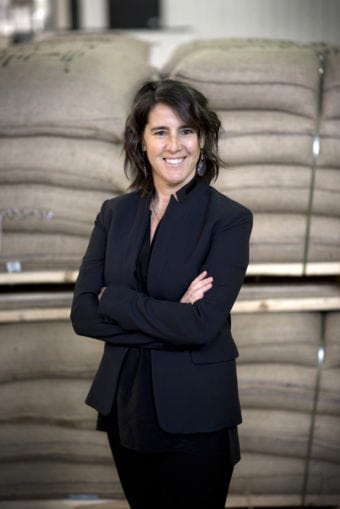
Humans began enjoying the special properties of the coffee plant, with its deep green, shiny leaves and its cherry-like fruit, in Ethiopia. Tribes would eat the slightly sweet berries or drink a concoction of boiled leaves and infuse themselves with a mild form of 1,3,7-trimethylxanthine, also known as caffeine. This style of consumption eventually spread across the Gulf of Aden into Yemen around the 14th century and then onward into Turkey, where a new method of drinking coffee was devised: the beans of the fruit were roasted over a fire, finely ground and then slowly simmered with water. The resultant aroma, flavour and higher caffeine content caused the drink to become so popular that special areas in Constantinople were created in which to consume it: the world’s first cafés.
It didn’t take long for European traders to get a taste for coffee, but because the plant only grows in areas with lots of sunshine, average temperatures of 15 to 20°C, and moderate rainfall but no frost, the beans were highly prized. Arab nations held a monopoly at first but in the 17th century, Dutch spies succeeded in smuggling coffee plants into the Netherlands, which were then shipped to colonies in Java and cultivated. France, Portugal and England followed suit and by the 1700s, coffee had joined sugar and slaves as the world’s most popular trade commodities.
In those days slave labour was commonly used on coffee plantations and sadly, the practice is still in evidence today. In fact, a 2016 report by Danish research centre Danwatch discovered slave-like conditions were widespread across Brazil’s coffee-producing industry. As a result, the two companies Nestlé and Jacobs Douwe Egberts, which together account for 40 per cent of the global coffee market, had to admit there could be human rights abuses in their supply chains. The Danwatch report went on to say, “Aside from the problem of slavery-like working conditions, the most serious problem for coffee workers on Brazilian plantations is that it is legal to spray the coffee with pesticides that cause illness and are potentially lethal.” The chemicals included DDT.
Two important steps to abolishing unethical working practices in the coffee industry happened late last century when consumers became wise to the adverse impacts of their cuppa joe. Organic certifications appeared in North America in 1980, followed by fair trade policies in the 90s. The former encouraged sustainable farming practices without the use of harmful pesticides and the latter guaranteed a minimum living wage for coffee farmers based on current market prices. Both had positive repercussions, but what will have an even greater impact on farmers’ lives, and the quality of our brew, are the small-scale roasters that are starting to become commonplace in mountain towns.
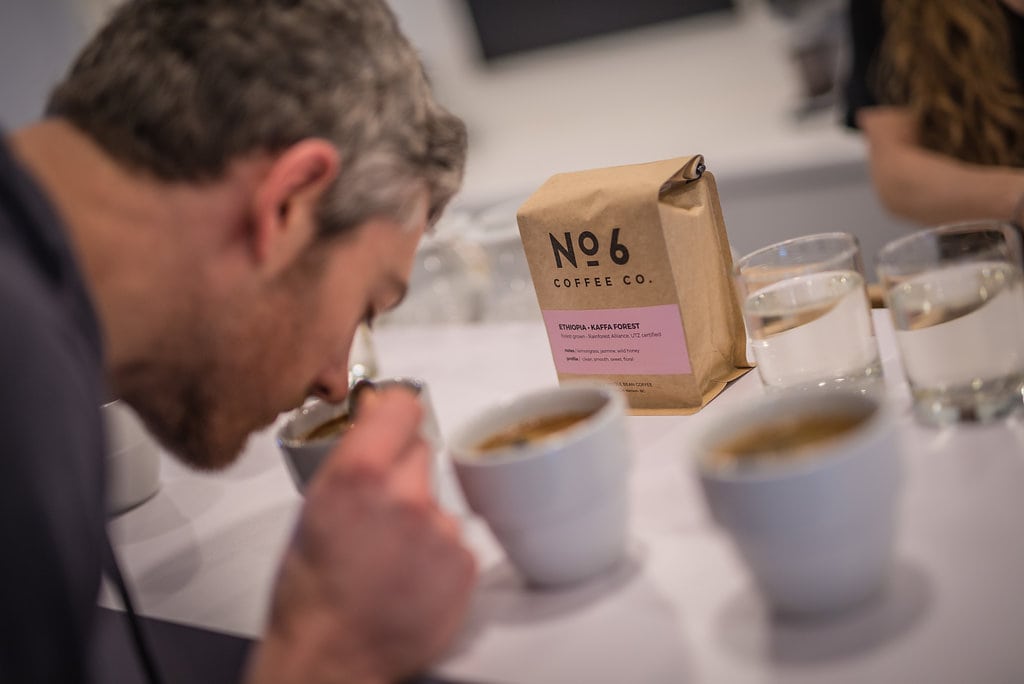
Leblanc of No6 Coffee Co. started roasting coffee beans at his home a few years ago using a stovetop popcorn maker. He’d share the results with friends and they told their friends. Eventually he upgraded to a countertop, one-kilogram drum roaster and started selling beans. Today he and his business partner, professional barista Kurt Beerens, own a five-kilogram roaster that’s installed in the centre of their clean, white-walled coffee bar, which specializes in “micro-roasting,” as well as serving and selling single-source beans. Their product tends to be more expensive (a 12-ounce bag can cost $20) but Beerens explains there are three benefits to the system.
Firstly, “there’s a lot more transparency with specialty coffee,” he says. “Consumers can trace their cup back to a specific farm.” For example, he serves beans grown by Ricardo Zelaya, a fourth-generation coffee farmer in Guatemala renowned for his quality product, humanitarianism and dedication to the industry. Secondly, the system is incentive-based so if a farmer produces a superior bean then roasters will bid higher to earn the right to serve it. A coffee’s value is determined by one of 3,500 licensed professionals on earth, called Q Graders, who objectively rate characteristics such as fragrance, flavour, body, balance, sweetness and aftertaste. A score out of 100 is applied and, typically, specialty coffee bars will only serve beans of 84 points or higher. The final benefit of a micro-roast system, says Beerens, is “consumers get a seriously delicious cup of coffee.”
In a way the coffee industry is becoming a lot like wine: people are willing to pay more to enjoy better-quality fruit from small producers. But as Robert Little of Empire Coffee in Nelson notes, unlike a waiter who simply uncorks a bottle, an unschooled barista can ruin a cup of coffee no matter how good the bean. To that end, we can expect to see more professional baristas, small-scale roasters and cafés featuring single-origin beans opening in our communities. Until then, popular shops that serve fair trade, organic coffee will be the main hubs where we socialize, sip and savour a taste of the equator.
For more about Kootenay coffee, read our Q&A with Elana Rosenfeld of Kicking Horse.
Vince Hempsall
Vince Hempsall lives in the beautiful mountain town of Nelson, British Columbia, where he spends his time rock climbing, backcountry skiing and mountain biking (when not working). He is the editor of Kootenay Mountain Culture Magazine and online editor for the Mountain Culture Group.
Related Stories
Kicking Horse — Last Mountain Standing
Two weeks ago, following what was already a dry early season in British Columbia, a tropical storm made its way inland…
Meet the CEO of Kicking Horse Coffee – Elana Rosenfeld
Kicking Horse Coffee began as a tiny, two-person operation in an Invermere garage in 1996. It's since become a…
Kicking Horse’s Wrangle the Chute Returns
February 1st, 2010, Golden, BC…. Get out your western gear and get set for the most unique two day big mountain…
How Mountain Bike Trails Are Changing The First Nations Experience
Patrick Lucas, the founder of British Columbia's Aboriginal Youth Mountain Bike Program, was recently in northern…




